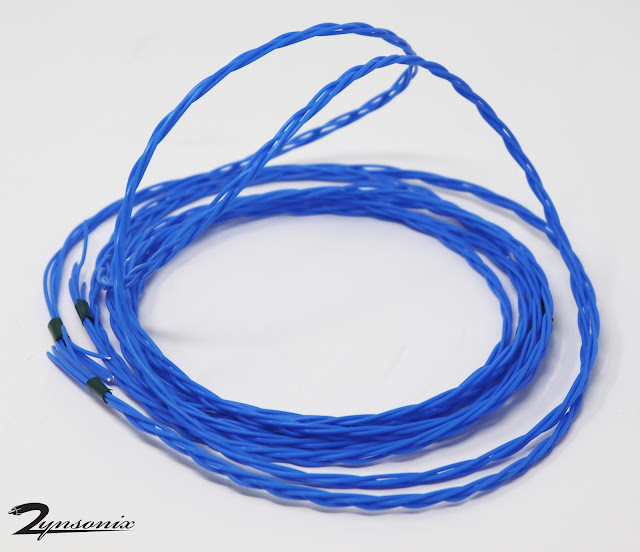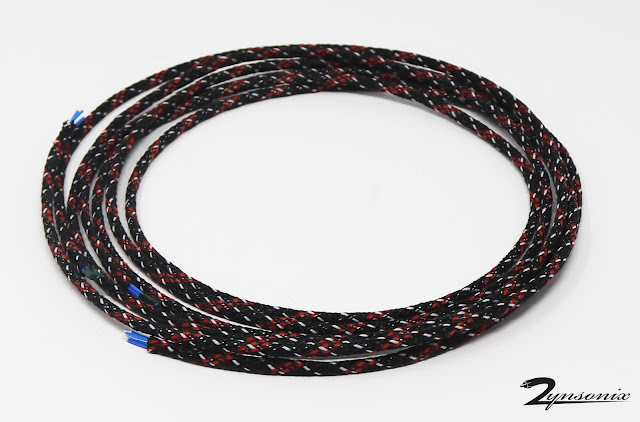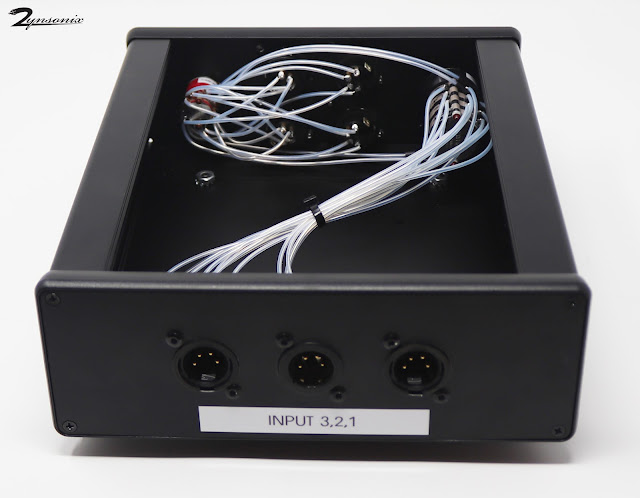I’ve been into HiFi audiophile headphones for a couple of decades now, and the hobby today is probably the biggest it’s ever been. While headphones were invented in the late 19th century, those intended for musical reproduction got their start in the late 50s with the Koss Stereophone in 1958. Koss released numerous quality headphones for decades and remained very popular. In the early 90s, higher-end headphones were having a renaissance of sorts with Sennheiser making the groundbreaking HD580, Grado releasing their SR series, and Sony introducing stellar products like the CD3000. In the 2000s we had AKG release the K701s, Sennheiser the HD600s, Grado the metal-bodied SR-325s, and Beyerdynamic refreshing and marketing its DT series for recreational listening. Into the 2010s and the options have exploded far beyond belief with many more players in the game and brands accommodating many different tastes. One company that really stands out to me is Grado, a small family-run business operating out of New York.
Grado (pronounced gray-doh) is what I’d consider a
conservative business that hasn’t made many changes as the headphone sector has
turned into a whirlwind of competition. If you look at the SR125 which was
introduced in 1993, it looks nearly the same today, and I’d imagine it is still
produced by hand the same way it was back then. There are the plastic grills
with discs in the middle noting the model number, plastic gimbals and angled
metal rods attaching them to the plastic rod-blocks marked “L” and “R” and
looking inside you can see the driver and the wires running to it soldered by
hand.
 |
| The Grado Hemp Headphones |
If you haven’t heard a Grado before, they have a general
house sound. That would be a little light in the lowest bass, fun punchy sub
bass, neutral mids and crisp, forward high energy in the upper mids and highs.
As you go up the line they become more resolving and refined (generally). New
additions to the stable such as the limited Hemp release and the RS-1X which
incorporates hemp in the wood body are voiced a little more warmly which makes
them great for longer listening sessions free of fatigue. Just about anyone
who’s listened to a Grado will tell you they are great for rock music as you
can really feel the energy come through the music.
So if you try to distill what makes a Grado a Grado and you
remove all the intangible brand-equity that comes with a family business making
hand-made goods, you’re going to be left with the fairly unique use of rudimentary
gimbals with fixed rods that are inserted into rod-blocks which are held by the
headband, along with 44-50 millimeter dynamic drivers in a smaller driver cup
that doesn’t fully cover the ears.
 |
| Unique engraving options |
Andrea Ricci, a fellow Grado enthusiast, started modding headphones using Beyerdynamic and Grado parts in the late 2000s. Creating a company called Spirit Torino, he began offering items for sale in 2016 including the Spirit Labs MMXVI which were Grados with custom engraved metal cups, a new headband, specially tuned SR80e drivers and a custom cable. Other headphones were to come in the following years like the Twin Pulse with isobaric motor unit. Now a full-fledged company with more mature products and distribution outside of Italy, Spirit Torino has become a headphone company that audiophiles should consider when selecting among the other high-end brands available.
While once a curiosity, I was finally able to obtain a demo
pair of Spirit Torino headphones for audition. The Super Leggera, which probably
resemble Grados the most out of Andrea’s offerings, are nearly all metal, from
the cups, the rod-blocks, the rods, the driver grill, etc. The cups are
partially anodized and have been CNC engraved. There is a generously sized
suede headband with visible stitching and the pads protrude out the way a Grado
G cushion would. The pads however are fenestrated suede which are probably
about the size of Beyerdynamic DT series pads and look like an offering from
Dekoni. The rod-blocks utilize two Allen screws, one holding the headband, and
the other allowing you to set the position of the rod more permanently. The
second feature is especially important given the weight of the cups, and
something that would be welcome on Grado’s larger metal cupped models.
 |
| The Spirit Torino with luxurious suede headband and handy locking screws |
These features, along with the weight, come together to give
a sense of quality / luxury. Another welcome feature is a removable cable, a
feature that really makes far too much sense not to include. Everyone is using
different single ended or balanced connectors, everyone has a different space
between them and their gear, and if you have pets or are just hard on your gear
the cable will likely get damaged, so an easy replacement goes a long way.
If you like customization, you’ll be very pleased that
Spirit Torino headphones come in a variety of different color cups and
headbands. Plain black doesn’t get to have all the fun like usual, with vibrant
reds, blues, and intricate engravings adorning some models. I get the
impression that Andrea really enjoys the CNC machine as so many of the parts
have been fashioned with it. I believe Grado also uses a CNC machine for
cutting/engraving, however it is limited to the cups.
 |
| Beautiful CNC work everywhere you look. |
This review will be comprised of my initial audition of the
Super Leggera, and after I had sent over to Andrea in Italy to have it updated
to the latest revision.
My first impressions of the non-upgraded version were very
good. I found I liked them best with Todd the Vinyl Junkie (TTVJ) flat pads. Sub-bass
was very powerful and succinct, larger than life and probably a bit too much
for those looking for a balanced headphone. There was a strong authority to
entire sound range where everything was dominant and in-your-face (or ears in
this case). The presentation was full, warm, and not much in the way of
soundstage. The clarity of the highs is usually reduced a little bit when using
the flat pads with Grados, which is also the case here, but many of us like the
tradeoff. The early version Super Leggeras are definitely a fun sounding
headphone with the flats, but clearly not as refined as something like a Focal
Utopia.
Upon speaking with Andrea who runs Spirit Torino, he let me
know that there are a couple of important updates that have been added to the
units, including a “neodymium magnet enhancement of 3.8 kg” on each driver, and
a “Nen Ventilarion” pad system, which may just be a bad Google translation of
ventilated. After a short trip to Italy, these two changes had a profound
impact on the sound, which went from Ibiza dance club to something more akin to
a symphony hall and reminding me of the Grado GS presentation.
If you’re not familiar with the GS-2000e, it doesn’t have
the peaky upper midrange that defines the Grado “energetic” house sound, but
there is a slight peak there. There is also a pronounced sub-bass energy that
seems present with nearly all Grados. The overall sound is both crisp and full.
Comparing the GS-2000e ($1,399 USD MSRP) to the Super Leggera ($1,600 USD), the
transition from subbass to midrange is the most stand-out change (while still
being a little on the punchy). I believe adding the weight to the back of the
driver assists to make the transition much smoother. Also present was a wider
soundstage, while not as wide as something like the hybrid driver Enigma
Acoustic Dharma headphones, there was more of a palpable space, likely created
from the new ventilated / fenestrated pads. Other than that, the sound seems a
little crisper when it came to guitars, but relatively similar.
You might be wondering why changing headphone pads makes
such a marked difference. The sound of dynamic drivers like Grado and Spirit
Torino can vary wildly depending on how close they are to your ear. As the
driver gets closer to the ear, bass and fullness increase dramatically while
treble clarity suffers and soundstage shrinks, and when it’s pulled away all
these facets are reversed. Thus, it’s very important to get the position right.
I can tell Spirit Torino went to great lengths to not impair the sound by have
a very thin fabric between the ear and the driver that is barely there and having
the circumaural pads (pads that cover the ears completely) get the driver at a
very specific distance from the ear canal.
 |
| Note the perforated cups and attractive CNC-cut grill |
The verdict? Honestly, I liked both the original and latest version of the Super Leggera for different reasons. The original made thumping electronica and synthwave wildly exciting, and the latest version worked much better for acoustic guitar and indie rock genres I enjoy such as shoegaze and prog. Compared to the GS-2000e the latest version offers a similar sound with a little more refinement and is built so impressively it’s hard not to gawk at them before putting them on your head. At $1,600 USD I believe it is priced competitively for the sound quality, and very reasonable when you consider the build quality.
Justin of Headamp has been in the headphone hobby 20+ years now and is the U.S. distributor for Spirit Torino. I’ve met him at a few meets and he’s a great fellow. Drop him a line at Headamp.com if you’d like to check out this exciting new offering in the headphone world.
Please note the Spirit Torino Super Leggera was provided to Zynsonix Audio LLC at a discounted rate for an honest review.


























